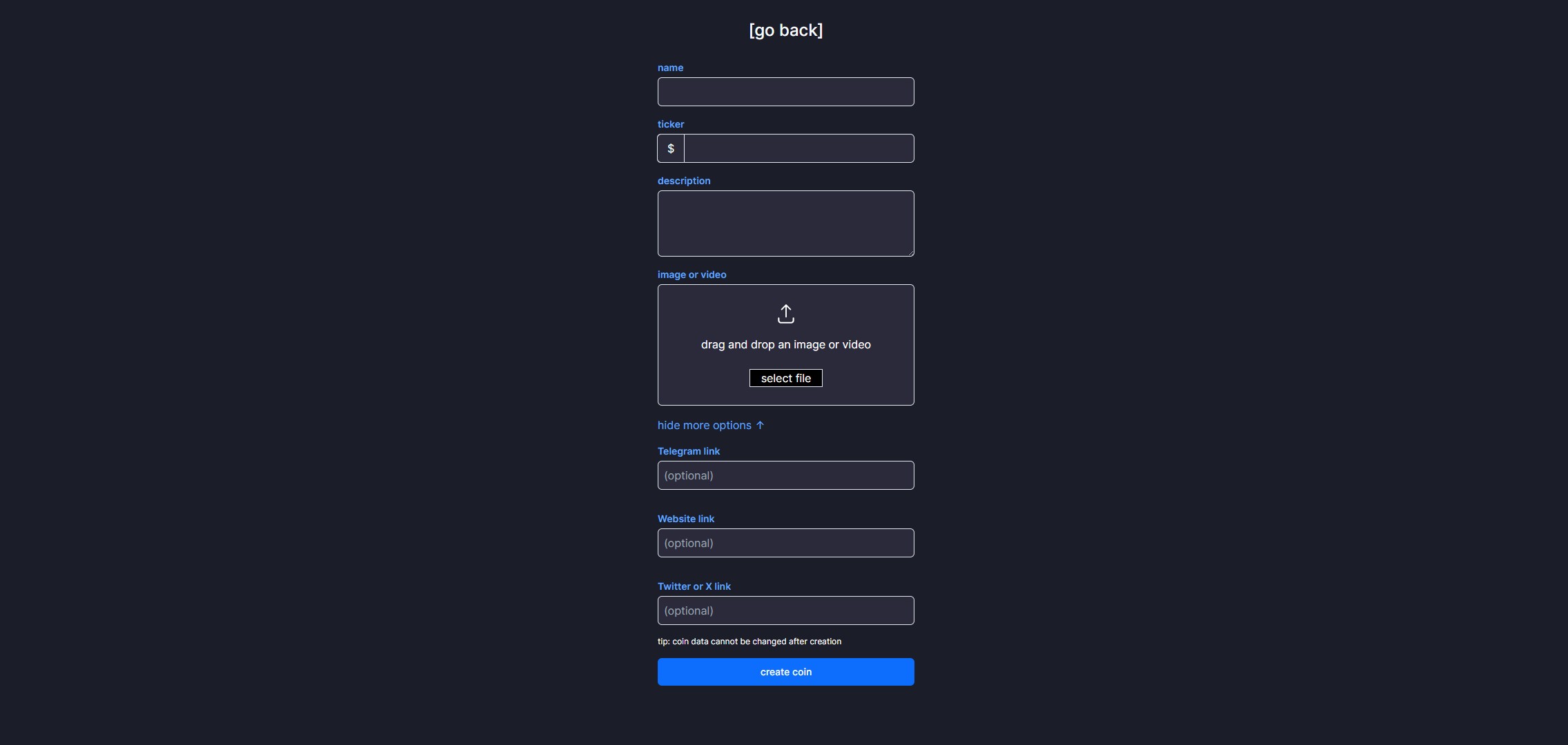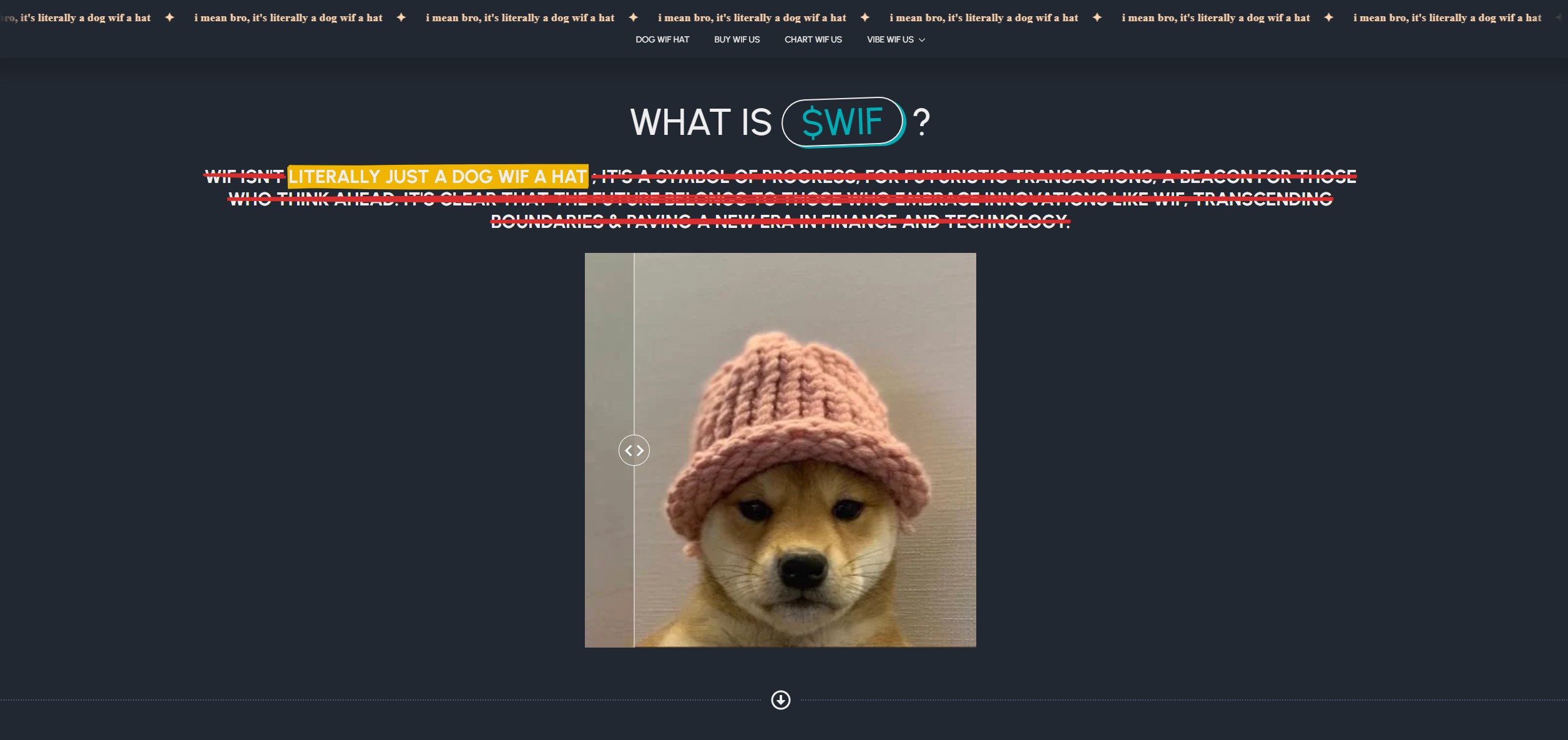How to Create a Memecoin in 2025
Memecoins are a mix of internet culture, speculation, and community-driven hype. They weren’t designed to solve technical problems or disrupt finance. They exist because people enjoy the absurdity, and because sometimes, the absurd works. Coins like Dogecoin, PEPE, and Shiba Inu didn’t take off because of strong fundamentals. They took off because they tapped into something familiar and shareable. This guide breaks down how to create a memecoin from the ground up. It covers the technical steps, the creative process, and the parts most people overlook, like compliance and sustainability.
What Makes a Memecoin a Memecoin
A memecoin is a cryptocurrency built around a joke, trend, or cultural reference, but it’s not just about that. What sets memecoins apart is their ability to spread. They’re designed for virality, not utility. The value comes from attention, not function.
Most memecoins have no formal use case, no serious roadmap, and no tech innovation behind them. That’s the point. They lean into absurdity, using humor and familiarity to catch on. The barrier to entry is low, both for creators and buyers. Launching one doesn’t require a complex protocol or white-glove development team. And buying one usually costs fractions of a cent.
What makes them work, when they do work, is community and timing. A coin tied to a popular meme or moment can snowball quickly if it gains traction on Twitter, Reddit, or Telegram. Memecoins aren’t competing with infrastructure tokens like Ethereum or Solana. They’re not trying to replace stablecoins either. They sit in a whole different lane.
The Core Idea: Theme, Audience, Purpose
Every memecoin starts with an idea, but not every idea is worth turning into a token. The concept has to land quickly. It needs to be familiar enough to trigger recognition, but distinct enough to stand out in a crowded space. A coin that references an old meme no one cares about anymore won’t get far. Timing matters. So does tone.
You’re not just picking a name or designing a logo, you’re defining a reference point. Is this coin meant to be a short-lived joke, or is it aiming for something bigger? Some memecoins are made purely for fun. They ride a trend, generate quick buzz, and fade out. Others try to build on that initial attention, layering in community governance, NFT tie-ins, or staking models. Neither approach is wrong, but they require different levels of planning.
Knowing your audience helps too. A coin built for crypto Twitter will look different from one targeting gaming communities or meme-heavy corners of TikTok. Clarity of intent shapes everything. The best-performing coins don’t just drop out of nowhere. They tap into something people already care about and give it a new form.
Picking the Right Blockchain
The blockchain you build on defines a lot of things. It affects who can access your coin, how much it costs to launch, and how easily others can integrate with it. Most memecoins are launched on existing chains using token standards like ERC-20 or BEP-20, and each chain comes with trade-offs.
| Blockchain | Fees | Speed | Decentralization | Developer Tools | Ecosystem & Adoption |
| Ethereum | High | Moderate | Strong decentralization | Mature, widely supported | Largest dApp ecosystem |
| BSC | Low | Fast | Less decentralized | Easy to use, EVM-based | High retail user base |
| Solana | Very low | Very fast | More centralized | Growing, less mature | Gaining traction, esp. for NFTs |
| Base | Low | Fast (L2 speeds) | Built on Ethereum L1 | Optimized for devs (Coinbase-backed) | Newer but growing quickly |
Choosing Ethereum gives you credibility and broad compatibility, but comes at a higher cost. BSC is cheaper and faster but draws criticism for being more centralized. Solana is fast and cheap but has faced reliability issues. Base offers the benefits of Ethereum’s ecosystem with lower fees, but it’s still early in terms of adoption.
If you’re planning a coin that’s meant to ride a trend and move fast, lower fees and faster confirmation times might matter more than decentralization. If you’re building something longer-term, access to a large developer and user base could be the better tradeoff.
Creating the Token
You can launch a memecoin in two ways: write the smart contract yourself, or use a no-code token generator. If you’re comfortable with Solidity (or hiring someone who is), coding gives you full control. If not, platforms like Pump Fun let you create a token through a simple interface: just connect a wallet, set the parameters, and deploy.
No matter how you build it, every token needs the basics:
- Name: What people will call it (e.g., DogeCoin).
- Symbol: The ticker (e.g., DOGE).
- Total Supply: How many tokens exist—millions, billions, or trillions.
- Decimals: Usually 18, but you can choose less if needed.
- Minting/Burning: Whether new tokens can be created or destroyed later
Beyond that, you can add features depending on what you want your coin to do. Some memecoins include:
- Reflection: A percentage of every transaction is redistributed to holders.
- Staking: Users lock tokens to earn rewards, encouraging long-term holding.
- Governance: Token holders can vote on decisions, often through a DAO setup.
Complex features only make sense if you plan to grow the coin beyond its initial meme status.
Writing and Auditing the Smart Contract
The smart contract is the backbone of your memecoin. It controls everything: how tokens move, how they’re created or destroyed, and how any special mechanics work. If there’s a flaw in the contract, the entire project is at risk. Once it’s deployed, you can’t edit it, so it needs to be right the first time.
If you’re not a developer, don’t try to wing it. Work with someone who knows Solidity or Rust (depending on your chain), or use a well-reviewed open-source template as your starting point. Even minor bugs can lead to exploits, locked funds, or complete loss of user trust.
Before you go live, get the contract audited. A real audit can catch vulnerabilities, logic errors, or edge cases that break under pressure. Firms like CertiK, Hacken, and SlowMist are widely used in the space. If they find issues, fix them and re-audit if needed.
A solid audit won’t make your coin bulletproof, but it gives you credibility and helps prevent major failures. Most importantly, publish the audit. If you want users to trust the project, show them what’s under the hood.
Tokenomics that Don’t Suck
Most memecoins die not because the idea is bad, but because the tokenomics are. If people don’t trust how your token is distributed, or if it looks like a cash grab, they’ll move on. Fast.
Good tokenomics don’t need to be complex. They just need to be fair, transparent, and built to avoid instant collapse. That means thinking about how much supply there is, who gets what, how it’s locked, and how it enters circulation over time.
Here’s a basic example of a memecoin allocation model:
| Allocation | % of Total Supply | Lock Duration | Why It Matters |
| Community | 40% | None | Drives engagement, giveaways, and organic growth |
| Liquidity Pool | 25% | Locked for 1 year | Prevents rug pulls, ensures stable trading |
| Team | 15% | Vested over 12-24 months | Builds trust, avoids early dumps |
| Marketing | 10% | Partial lock (6 mo) | Funds influencer deals, ads, outreach |
| Treasury | 10% | Multisig wallet | Covers dev costs, future use, or unexpected needs |
This isn’t the only setup, but it shows the thinking. Locking team and LP tokens is non-negotiable if you want anyone to take the project seriously. And if you’re doing airdrops, set limits to prevent whales from farming and dumping.
Tokenomics are make-or-break. They define how your coin will live, trade, and build (or lose) momentum.
Launching the Coin
Once the contract is ready and audited, it’s time to go live. Start with a testnet deployment to make sure everything works under real conditions. That includes sending tokens, interacting with wallets, and confirming that any extra features, like staking or fees, behave as expected. Use testnets like Goerli (Ethereum), Fuji (Avalanche), or BSC Testnet depending on your chain.
When you’re confident the contract runs clean, deploy it to mainnet. From there, your next move is setting up liquidity so the token can be traded. Most memecoins launch on decentralized exchanges like Uniswap (Ethereum) or PancakeSwap (BSC). You’ll pair your token with a base asset like ETH, BNB, or USDC and add both to a liquidity pool.
To keep things from falling apart on day one, lock your liquidity. Use tools like Unicrypt or PinkSale to lock LP tokens for at least six to twelve months. This proves you’re not planning to pull the plug and run. Same goes for team tokens. Vesting contracts show commitment and reduce sell pressure.
Make all of this public. Share the contract address, the lock verification, and any relevant wallet breakdowns. If people have to dig to find out where the tokens are, they’ll assume the worst. Transparency doesn’t guarantee success, but without it, failure comes fast.
Creating a Website, Docs, and Whitepaper
A memecoin without a website looks like a scam. That doesn’t mean you need a full brand deck or animated explainer videos. You just need something that tells people what the coin is, why it exists, and where to buy it.
The site should include:
- A short, clear description of the coin
- Token address and supported chains
- How to buy it (with links to DEXs)
- Links to the whitepaper, audit, and socials
- A roadmap, if one exists, and if it doesn’t, say that
The whitepaper doesn’t need to be 20 pages long. It just needs to be honest. Explain the origin of the meme, the tokenomics, the intended audience, and whether there’s any utility planned. If it’s just for fun, say that up front. People respect clarity more than fluff.
Disclosures are where you protect yourself. Spell out the risks. Make it clear this isn’t a guaranteed investment. If you’re not selling to U.S. users or residents of specific jurisdictions, state that. If there’s no KYC or AML because you’re not handling user funds, say so, but know that doesn’t exempt you from regulations later.
Think of the site and docs as your first test of legitimacy. If they look like a placeholder or copy-paste job, that’s how your project will be treated.
Getting People to Notice
Marketing a memecoin doesn’t mean pretending it’s the next Bitcoin. People can tell when hype is forced. If your project needs to scream “to the moon” to get attention, it probably doesn’t have much else going for it.
Start with platforms that actually move meme culture, Twitter (X), Reddit, Discord, and TikTok. Each works differently.
Twitter is for fast updates, meme threads, and tagging influencers. If something’s going viral, it’s usually here first. Reddit is where you build narrative and credibility. Subreddits like r/cryptocurrency or niche meme threads let you speak directly without sounding like an ad. Discord is your home base. That’s where your holders hang out, talk, and organize. If your Discord is dead, your coin is too. TikTok is chaotic but high-reward. A single joke or trend can drive thousands of impressions in hours. Just don’t try to force a meme since it dies on arrival.
The difference between community and shilling is how you show up. Shilling is dropping your link and disappearing. Community is posting, interacting, and giving people a reason to care beyond the price.
If people feel like they’re part of something early, and you keep them involved, they’ll do your marketing for you. That’s what turns a one-off token into a movement.
Legal and Regulatory Risks
Launching a memecoin doesn’t mean you’re off the hook legally. If your project touches money, investments, or the public, regulators might care, even if it’s “just a joke.” The rules aren’t always clear, but the consequences for ignoring them are.
Here’s what can get you into trouble:
- Selling tokens as investments without registration or disclaimers. If your marketing suggests people will make money just by holding, it starts to look like a security.
- No KYC or AML processes when you raise funds. If you run a presale, ICO, or accept payments for tokens, you may be expected to vet participants and flag suspicious activity.
- Not disclosing risks or locking team wallets. If the project looks like a setup for a rug pull, that’s fraud, even if it wasn’t the plan.
- Operating in restricted jurisdictions like the U.S. without understanding local laws.
You don’t need a full-time legal team, but you should talk to a lawyer before launch. A one-hour consultation with someone who understands crypto law is cheaper than fighting a case later. They’ll help you decide whether disclaimers, legal entities, or registrations are needed based on how and where you’re launching.
Just because most memecoins don’t follow the rules doesn’t mean you can’t get flagged. Staying anonymous won’t protect you if your name eventually leaks. And if you’re in this for more than a week of hype, being compliant is part of staying alive.
Monetizing a Memecoin
If your meme coin gets attention, there are ways to turn that momentum into revenue, but it has to be done carefully. The goal isn’t to cash out fast. It’s to build something people are still willing to hold when the meme isn’t trending anymore.
| Monetization Method | Description |
| Transaction Fees | A small cut from every buy, sell, or transfer can fund development or feed back into the ecosystem. Keep it reasonable—high fees kill volume. |
| NFT Drops | If your meme has strong visual identity, NFTs can extend the brand. They don’t need to promise utility—just be collectible and on-theme. |
| Staking/Yield Mechanics | Let holders earn by locking tokens. This only works if rewards are sustainable and not just diluting supply to look busy. |
| Merch | Simple runs of shirts, hats, or accessories can build loyalty and generate non-token income. Bonus if it’s actually wearable. |
| Licensing | If the brand grows, you can license the meme, artwork, or even the token name to others—especially in gaming or media. |
What kills most projects is overpromising. If you promise an ecosystem and deliver a Telegram sticker pack, people bail. Same goes for printing more tokens just to fund short-term goals. Overselling vision, or flooding supply to fake growth, burns trust fast.
Monetization should be a byproduct of a good coin, not the core goal. If people like what you’ve built, they’ll want more ways to engage with it. That’s when monetizing makes sense.
How to Keep the Project Alive (or End It Cleanly)
Most meme coins have a short shelf life. If you want yours to last, you need to give people a reason to stick around once the hype fades. That doesn’t mean forcing a roadmap where there isn’t one. It just means thinking ahead.
To keep the project alive, start by introducing utility. Even simple features, like staking, tipping, or NFT integration, can give the coin purpose beyond speculation. Transitioning to a DAO is another step forward, allowing holders to vote on future changes or how community funds are used. This adds structure and shared ownership.
You can also keep the brand fresh by dropping spin-off content, such as NFTs, mini-games, or side tokens that tie back into the main concept. If done right, these add-ons extend the life of the project without diluting its identity. Most importantly, keep updating. You don’t need constant releases, but silence kills momentum. Even small updates, contests, or community shoutouts can keep people engaged.
That said, not every project needs to drag on forever. If it was meant to be a one-off, there’s nothing wrong with saying so. Communicate clearly, close things down cleanly, and don’t vanish with the funds. Leaving the door open for future projects is easier when you don’t burn the community on the way out.
Some meme coins go the distance. Others hit hard and disappear. The difference usually comes down to honesty, engagement, and whether anyone still cares six months in.
Conclusion
Meme coins live at the edge of culture, speculation, and community. That’s what makes them fun, but also what makes them fragile. If you’re serious about launching one, treat it like more than a joke. Respect your holders, stay transparent, and build something that at least tries to hold its own when the meme fades.
There’s no formula for going viral. But people know when something’s real, even if it started as a joke.
Frequently Asked Questions (FAQ)
What is a meme coin?
A meme coin is a cryptocurrency based on a joke, meme, or viral internet trend. These coins usually don’t offer utility in the traditional sense—they gain value through social momentum, community support, and cultural relevance.
Do I need coding skills to create a meme coin?
Not necessarily. You can use no-code platforms like Token Tool or Pinksale to launch a meme coin without writing smart contracts yourself. If you want more control or plan to build advanced features, you’ll need a developer familiar with Solidity or the language used on your chosen blockchain.
How much does it cost to create a meme coin?
Costs vary depending on the blockchain and the features you include. Basic deployments on low-fee chains like BSC or Solana might cost a few hundred dollars. Ethereum-based launches can run into the thousands due to gas fees, audits, and marketing. Budget more if you plan on listings, influencer outreach, or community growth.
Are meme coins legal?
Meme coins exist in a legal gray area. If you’re raising funds, promising returns, or operating in regulated markets, you may need to comply with securities laws, KYC/AML requirements, or tax reporting. Always consult a crypto-savvy lawyer before launch.
How do meme coins make money?
Meme coins can generate revenue through transaction fees, NFT sales, staking models, partnerships, and merchandising. Some projects also license their brand or build ecosystems with added features. Monetization only works if there’s long-term interest—it can’t be the only goal.
What’s the best blockchain to launch a meme coin?
Ethereum, Binance Smart Chain (BSC), Solana, and Base are all common options. Ethereum offers reputation and compatibility, while BSC and Solana provide lower costs and faster speeds. Choose based on your budget, audience, and future goals.
How do I list a meme coin on an exchange?
To list on decentralized exchanges like Uniswap or PancakeSwap, you’ll need to create a liquidity pool with your token and a base asset (like ETH or BNB). Centralized exchange listings require more paperwork, fees, and compliance, but offer wider exposure.






